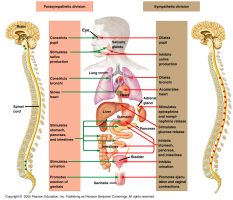Movement training is often separate from technical training you do for your sport or activity, and sometimes different from what we expect our “fitness” activities to feel like. This kind of training focuses on finding clear and efficient motor control in your body; to support your structure and move it through space with ease. With a lot of work to do, and not a lot of time to do it in, it’s easy to get caught up in the performance aspect of your sport – focussing on strength and power, reaching for better times, or better lines, or anything else that makes you a “beast” in your sport. Many people forgo movement training or restorative exercise, thinking they won’t get the same bang for the buck in terms of performance.
And it’s true, movement training won’t torch calories or pump you up with explosive power.
But with improvements in mobility and motor control, structural balance and integration, the efficiency that results from movement training is like fuel to the fire for your power, agility and endurance goals. It creates ease of motion, improves endurance, reduces recovery times and contributes to injury prevention in a major way. How, you ask? Here’s my list for the top 10 ways movement training improves performance:
1. Provides support for your structure
How your structure is supported and moved through space is fundamental to your success (or lack thereof) in more complex activities. If you have a hard time balancing or supporting your spine just lifting a leg off the floor, you have to realize that the challenge is multiplied exponentially when you break into a run, or if you’re climbing something. Movement training will help you to create and sustain the fundamental support for your structure, on which you can hang all your higher level activities.
2. Creates balanced, sustainable strength
In maintaining an eye to structure and function, movement training works to create balanced strength: both sides of a joint, the front and back of your body, both sides of the body and so on. Every movement you make is a whole body movement! Strength is not sustainable when another part of the body has to compress and shut down to support a movement. Movement training will help you recognize when a movement is well supported, and when you’re having to use the wrong stuff to get the job done. Over time, too much of the “wrong stuff” leads to dysfunction and injury. Why not integrate a prevention plan into your training routine if you can?
3. Builds a better brain-body connection
Movement training is as much about training the brain and the nervous system as it is about training the body. Understanding that your movement strategies come, initially from the brain and that the brain organizes movement into patterns – it’s important to practice the ideal MOVEMENT you are looking for, at a load level that your body can sustain well. This can’t be done (at least initially), under heavy load, high tension or in a timed environment. Take the time to create better motor control in specific movements, and to improve sensory awareness so that you can find that motor control in a variety of different situations.
 4. Improves nervous system balance
4. Improves nervous system balance
The autonomic nervous system needs to be able to move easily between its “fight or flight” functions and its “rest and digest” functions. With the focus on an all or nothing mentality, many athletes get “stuck” in the fight or flight side of the nervous system. When this happens, type 2, fast twitch muscles work too hard, under the influence of too much neural drive. That can feel a little addictive, because you feel strong. But in this situation, the restorative, supportive functions in your body can be difficult to access. And it influences the ability of type 1 endurance muscles to fire well at all! Long term, that spells trouble. With good movement training that re-trains the brain too, you can create better balance in the nervous system, and find the “autonomic flexibility” that will lead to good health and great function.
5.Reduces compensations for more efficient motion
Athletes are used to getting the job done at all costs. As a result, they are often master compensators. They work around what isn’t working to find a way to complete the job, finish the race, get it done! Used to “pushing through” discomfort and pain, athletes may not notice compensations until they have stacked up in a complex series that eventually reduces range of motion, changes function or finally causes a complete breakdown. Movement training helps to identify these tricky compensations, gradually unraveling them and creating better support strategies. In untangling an inherently inefficient motion, you open the body up for more ease, stamina and range of motion, giving you that sensation of having “more in the tank” than you expect! And when we’re talking performance – that’s ALWAYS a good thing!
6. Provides strategies for thriving in & surviving your sport
Every sport has its rhythms, its idiosyncrasies, its challenges. Add to that the genetic, structural, habitual patterns that each person brings to the sport, and no one “technique” can work for everyone! Movement training can help you to navigate the challenges of your own body in motion relative to your favourite sport or chosen discipline. What’s good for the sport isn’t always good for the body. Movement training gives you strategies to prepare for and recover from the demands of your discipline.s.
7. Improves mobility
As your structure finds better balance, you compensate less and there is less need for inefficent bracing. Without training “flexibility” specifically, you can find greater functional range of motion in your limbs and in your spine. You’ll feel less muscle stiffness resulting from poor load transfer through the joints. Trained well, that fresh mobility will improve your agility exponentially in all directions. You have to learn how to control that mobility effectively – but well supported freedom in the body increases your athleticism overall.
8. Educates you about your own body in motion, so you can make informed decisions for training
Athletes are constantly finding new ways to improve their game. What can I do better? What can I do differently? Movement training teaches you about what your body needs to move well. You’ll gain a better sense of when it’s best to push your limits, when it’s time to ease into your workout. Once you have a sense of your own structure and your movement patterns, understand how you tend to attack different kinds of movement, and begin to feel how stress and emotion translate in your body, you have important new tools to take with you into your technical training and conditioning.

9. Provides strategies to support your daily movement
No matter how intense your training, you will have more hours that you’re not training than hours you are training. And what your body does during those off hours contributes to the shape, tone and action of your body in motion. Your daily movement: how you walk, how you sit in your car, the work you do, whatever else you’re doing has an impact on your sport. Movement training gives you strategies for supporting your structure well in your daily movement as well, so that you’re supporting positive patterns ALL the time, not just in a few isolated training periods.
10. Integrates the body as a whole
Every movement is a whole body movement. Even movements in isolation are supported or controlled from other places in the body. When the body works as an integrated whole, then load, force and velocity can be more effectively transmitted through it. Movement training gives you the skills to organize your whole body well to move with ease, efficiency and purpose. That gives you a pretty powerful foundation on which to build whatever level of power, mobility, agility and endurance you desire!
Give it a try! I think you’ll find that movement training deserves an important place in your overall fitness & conditioning strategies. Want more information? Check out Moving Spirit’s Pilates & Integrated Movement Training Programs. We’ll help get you moving at the top of your game.
